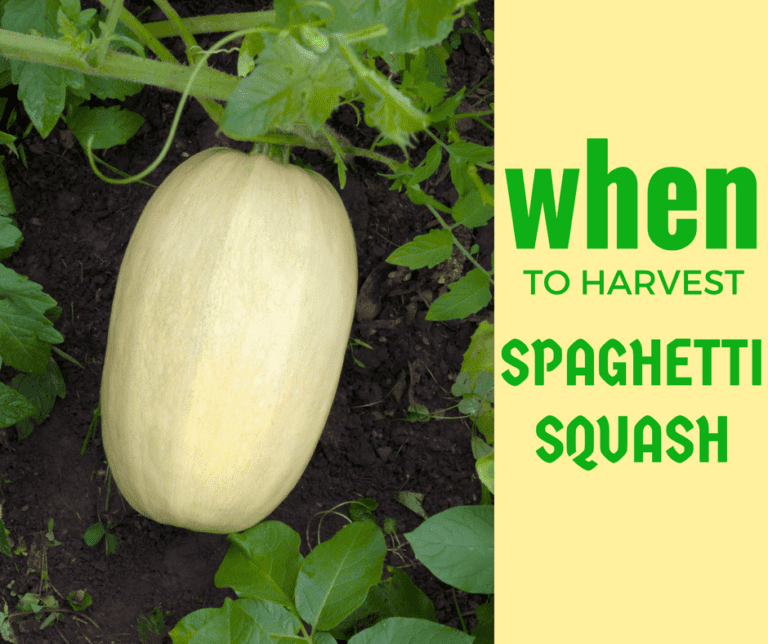Complete Guide To Companion Planting with Tomatoes
Companion planting in a vegetable garden is all about attracting beneficial insects (natural predators of garden pests like aphids and caterpillars), encouraging growth, and optimizing overall output. It’s a delicate balancing act between providing a suitable environment for insects like beetles and ladybugs and making the most of a growing season.

Most tomato companion planting knowledge is anecdotal rather than scientifically verified, but it is a case of using common sense and discovering what works well when creating a kitchen garden.
Tomato companion planting with specific surrounding plants and flowers can provide a variety of advantages. These can include enhancing and increasing soil nutrients, attracting pests away from tomato plants, and attracting important pollinators like bees and butterflies to tomato plants. These are all beneficial to permaculture gardening and will assist you in creating a sustainable garden.
Companion plants can also help to improve the growth environment by providing shade, support for developing plants, ground cover, or by breaking up the soil.
Tomatoes pair well with a variety of popular garden vegetables. Some companion plants are said to improve tomato plant health and vigor, while others are said to improve tomato flavor and repel and deter insect pests and diseases. You’re probably going to grow some of these plants anyway, so why not experiment and use some of them as tomato companion plants?
Companion Plants to Grow With Tomatoes
Many plants are marketed as increasing tomato health, vigor, and flavor. All of these characteristics are difficult to quantify because there is little scientific evidence to back up the assertions, and many other factors may be at play. Still, it’s fun to experiment with them in your own garden. Companion planting tomatoes with natural defenders will help to protect them from becoming the feast of pests, and is also a good method for a wildlife garden.
Amaranth, asparagus, basil, beans, borage, calendula (pot marigold), carrots, celery, chive, cleome, cosmos, cucumber, garlic, lemon balm, lettuce, marigold, mint, nasturtium, onion, parsley, sage, and squash are all good companion plants for tomatoes.
Basil and Amaranth
On and off the plate, basil and tomatoes are soulmates. This lively, pungent herb repels insects, particularly flies and hornworms, and is said to increase production.Amaranth draws predatory beneficial insects, which deters pests.
Asparagus
The reciprocal nature of effective companion planting is demonstrated by asparagus: With the help of a substance called solanine, tomatoes repel asparagus beetles, and asparagus aids in removing root-knot nematodes that are drawn to tomatoes from the soil.
Squash and Borage
Due primarily to timing, tomatoes, borage, and squash are a frequent trio in companion planting. The blue star-shaped blooms of the flowering herb borage are a huge favorite of pollinators in general, and it also deters tomato hornworms. In addition to safeguarding tomatoes and enhancing their growth and flavor, it also serves as a beautiful, eye-catching garnish. Then, the groundwork has already been done when late-summer squash, which needs pollinators to ripen, is prepared to bloom.
Winter Rye
Our cover crop is included on this list of tomato companion plants because of its capacity to control weeds around tomato plants. Winter rye has 16 distinct allelochemicals (compounds produced by some plants that restrict the growth of neighboring plants). It is one of the most well researched and used examples of a cover crop that can aid in weed control.
Winter rye contains allelochemicals that hinder weed seed germination but do not affect transplants of tomatoes, peppers, eggplants, and other vegetables grown in the residue left behind after chopping down the cover crop. Sow rye as a winter cover crop in the fall for this plant relationship.
When spring approaches, trim the plants back to the ground just as they begin to bloom (don’t cut them too soon or they will re-sprout, and don’t wait too long or they may drop seeds). Leave the leftovers alone and plant your transplants through it. There is no need to till the soil.
Carrots
Carrots placed alongside tomatoes assist to soften the soil. If the carrots are planted too close together, they may not grow as large as they should, but they will still taste fine.
Nasturtiums and French marigolds
Marigolds (not to be confused with the delicious, ornamental calendula or pot marigold) and nasturtiums are especially good tomato companions. Marigolds have been demonstrated to repel root-knot nematodes, parasites that feed on the nutrients in a tomato’s root system, while nasturtium functions as a general pest repellent due to its peppery, bitter oils—but don’t get too close. Nasturtium spreads quickly and can engulf other plants if not kept in check.
Radish
To deter flea beetles, put radish around the base of your tomato plants. Because flea beetles don’t travel far, these tomato companion plants must be planted right next to your tomatoes. Flea insects prefer radish foliage over tomato foliage and will gnaw ragged holes in radish leaves rather than kill immature tomato plants. Mature tomato plants may resist some flea beetle damage, but immature transplants can suffer greatly. Pac choi is another great sacrifice crop for flea beetles.
Lettuce and Garlic
When the weather warms up, lettuce likes some shade. It benefits not only from being placed in the shade of larger tomato plants, but it also acts as a live mulch, keeping the soil cool and moist. Red spider mites are repelled by garlic. Garlic sprays aid in the control of late blight.
Parsley and Chives
Parsley is another popular pairing: it promotes development and attracts tomato hornworm predators such as ladybugs, but keeps it away from mint. Chives are a necessary allium in every herb garden because they fight aphids, worms, and mites.
Cowpeas
The southern green stink bug prefers cowpeas. As a result, a neighboring planting of cowpeas attracts green stink bugs away from your tomato crop, preventing serious damage. Green stink bugs are mostly a concern in the southern United States, where they feed on a variety of fruits and vegetables, producing stippling and corking of the flesh. Cowpeas should be planted several feet away from tomatoes (stink bugs are strong fliers), and they should be planted several weeks before tomatoes.
Fennel
Predatory lacewing eggs are frequently found attached to the leaves of my fennel plants. The parasitic aphidius wasps, which exploit aphids to shelter and feed their growing young, are especially significant for tomatoes. Interplanting fennel with tomato plants may help reduce the quantity of aphids, which may be a concern for tomato plants.
Thyme
If yellow-striped armyworms are an issue in your yard, thyme is an excellent tomato companion plant. Researchers at Iowa State discovered that interplanting tomatoes with thyme (or basil) reduced egg-laying by adult armyworms. Thyme works well as a living mulch around tomato plants. Just bear in mind that it’s a perennial, so the plants will need to be relocated each season when tomato plants are rotated to a new garden site.
Oats
The ideal cover crop for beginners is oats. In regions with frequent cold temperatures, they are winter-killed; in the spring, you may grow tomatoes right through the leftovers. By preserving the soil over the winter and early spring and generating an impenetrable mat, oats planted in the fall aid in weed control. In addition, the decomposition of the trash enriches the soil with organic materials.
Squash
Squash, such as zucchini, require the same growth conditions as tomatoes and can be grown alongside them. Squash’s spreading shape and huge leaves also provide effective ground cover, which reduces water loss from the soil.
Cucumber
You might be shocked to hear that cucumbers also create a number of allelochemicals that limit growth, with cinnamic acid being the most researched. When planted as a dense ground cover of living mulch around taller crops, such as maize, tomatoes, and okra, cucumbers can be utilized as a weed-management technique. They also prevent weed seeds from germinating by shading the seeds. However, since you’re starting with transplants rather than seeds, they make excellent tomato companion plants. Avoid using them if you’re starting your partner crops from seeds.
Red Clover
Bumble bees also like red clover as a nectar source. Use it as a living mulch to increase pollinator populations. It has also been demonstrated to sustain a wide range of other beneficial insects. Not to mention clover’s capacity to fix nitrogen. Definitely a win-win tomato companion plant.
Coneflowers
Plan to add some coneflowers in and around your food garden to boost pollination of various crops, including tomatoes. Their enormous, broad blossoms make excellent landing pads for fat bumble bees and they are also pretty darn lovely.
Hairy Vetch
A cover crop of hairy vetch, which has been demonstrated to prevent foliar disease in tomatoes more than plastic sheet mulches, is another deterrent for Septoria leaf spot and early blight. Hairy vetch, as a legume, also contributes nitrogen to the soil. Plant it in the autumn and trim it back by hand, or with a mower or weed whacker, when the first seed pods show on the vetch plants in late April. Don’t wait for the pods to swell. Keep the residue in place and plant the tomatoes through it. This also serves to keep weeds at bay.
Plants to not grow with tomatoes
In general, if laying out a vegetable garden, it’s a good idea to consult a companion planting guide: Additionally, it will show what not to plant next to tomatoes, as the growth of the plant will be hampered by cauliflower, kale, Brussels sprouts, and kohlrabi (all members of the Brassicaceae family).
The correlations aren’t always logical: whereas fennel, a related carrot, does not benefit tomatoes, carrots do. Similar to tomatoes, eggplant is a member of the nightshade family and is vulnerable to early and late blight. The soil will suffer as a result, making it more difficult to avoid the following year.
Eggplant, peppers, and potatoes:
These plants, like tomatoes, belong to the nightshade family and are all susceptible to early and late blight, which can accumulate in the soil and worsen year after year. For at least three years, avoid planting them next to or in lieu of each other. Hornworms (Manduca quinquemaculata, the larval stage of the five-spotted hawkmoth) feed on the leaves and fruit of tomatoes, peppers, and eggplants and can destroy plants swiftly. Although some gardeners recommend eggplant as a companion plant for tomatoes, it can produce disease issues that are extremely difficult to eliminate.
Tomatoes and eggplant are both susceptible to early and late blight.
Early blight attacks tomato leaves, causing brown lesions that destroy the leaf tissue and cause it to drop. While this has no effect on the fruits, it can have an effect on development (fewer leaves means less energy from photosynthesis) and expose the fruits to sun damage.
Late blight begins in the tomato leaves as well, but it can extend to other parts of the plant, including the stem and fruit.
Planting tomatoes near potatoes can also make them more prone to potato blight.
Cabbage (Brassica) family:
All cabbage cousins impede tomato plant development (including broccoli, Brussels sprouts, cabbage, collards, cauliflower, kale, kohlrabi, rutabaga, and turnip).
Walnuts:
Avoid planting tomatoes near walnut or butternut trees, which release an allelopathic toxin called juglone, which hinders tomato development (and all the members of the nightshade family). Tomatoes are prone to the illness walnut wilt as well.
Corn:
Corn earworms are the same as tomato fruitworms (Helicoverpa zea). Growing plants that are prone to the same pests in close proximity can lead to tragedy and a destroyed garden.
Dill:
Tomatoes and dill have a more convoluted connection than some of the other plants on this list, while they aren’t strictly enemies.Dill makes an excellent companion plant for young plants. According to some reports, it promotes tomato development and deters some pests, such aphids, which frequently harm tomato plants. However, the association deteriorates as the dill plant ages. Some gardeners claim that mature dill plants produce the opposite effects, stunting rather than promoting the development of tomato plants.
Plant young dill close to your tomato plants then relocate them to a different bed before they set seed in order to make the most of this complicated connection. Or, if that’s too much bother, completely avoid the dill.






